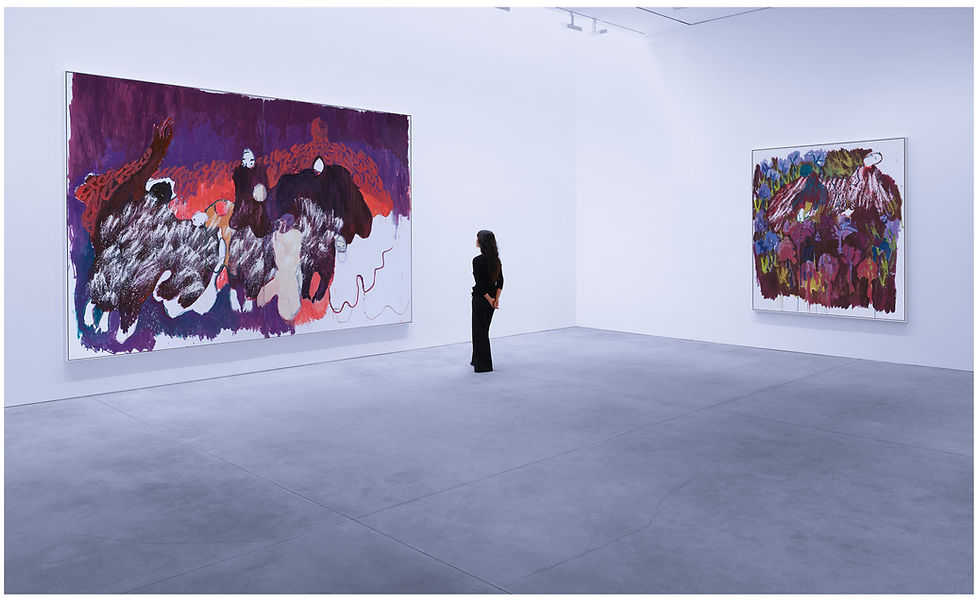The ArtWord in 2025: Predictions and Pathways for Artists.
- Richard Mudariki

- Jan 7
- 4 min read
by Richard Mudariki

The year 2025 looms with uncertainty for artists, especially in Zimbabwe and across the African continent. Being an artist has always been a difficult career path, but today, the challenges seem steeper than ever. From limited opportunities to a rapidly changing global art market, the struggle to survive and thrive is more evident than ever. These difficulties resonate with the ideas outlined in William Deresiewicz's book, The Death of the Artist: How Creators Are Struggling to Survive in the Age of Billionaires and Big Tech. Deresiewicz's analysis of the precarious conditions facing creators worldwide has profound implications for African artists, whose struggles are compounded by economic instability, insufficient infrastructure, and limited market access.
Zimbabwean contemporary artists, like their global peers, face systemic challenges that hinder sustainable careers. The creative sector remains heavily informal, with the vast majority of artists operating as freelancers. According to a 2024 report by the International Labour Organization and UNESCO, 93% of Zimbabwe’s creative economy workers are self-employed, often without social security, stable income, or access to formal markets. This informality exacerbates the precarious nature of artistic work, leaving many creators to navigate an unforgiving economic environment.
The digital age, which promised democratization of access and distribution, has proven to be a double-edged sword. While social media platforms and digital marketplaces offer visibility, monetizing creative labor remains challenging. Big Tech platforms benefit disproportionately, while creators struggle to secure fair compensation. For African artists, these challenges are compounded by the digital divide. Many lack access to reliable internet, digital tools, and training. Initiatives like the U.S. Embassy's "Artist Creative Entrepreneurship" project in Zimbabwe aim to bridge these gaps, but systemic change is still needed. Without robust digital literacy and infrastructure, many African artists remain excluded from the opportunities the digital age could provide.

Complicating matters further, the global art market itself is undergoing seismic shifts. A recent article in The Art Newspaper predicts a grim year ahead for the art world. Economic pressures, changing buyer priorities, and oversaturation of fairs are creating ripple effects. One major auction house is expected to close its doors in 2025, signaling a significant shake-up in the industry. Additionally, smaller art fairs are struggling to survive, with predictions that several will fold due to rising costs, declining attendance, and the changing dynamics of how collectors engage with art. These developments will likely have a trickle-down effect, impacting emerging artists and galleries that depend on these platforms for exposure and sales.
For Zimbabwean and African contemporary artists, this shift in the global market presents both a challenge and an opportunity. On one hand, fewer fairs and traditional auction avenues may limit access to global collectors. On the other hand, there is room for the emergence of alternative platforms, such as regional art fairs or online led projects that focus specifically on African art. Johannesburg, for example, continues to grow as a cultural hub, offering possibilities for artists to tap into its vibrant and evolving scene. Events like FNB Art Joburg and Latitudes Art Fair provide platforms for African artists to showcase their work to international audiences. However, competing in these spaces often requires financial resources, professional networks, and market knowledge—privileges that many emerging or mid-career artists lack.
Despite the challenges, artists across the continent are finding ways to adapt. Many are embracing a hybrid model of creation, combining their art practices with teaching, curating pop up shows such as the recent one at Chikwanha Hotel in Chitungwiza, or other entrepreneurial ventures. This diversification helps to stabilize income while maintaining artistic relevance. Moreover, collaborations with cultural institutions, NGOs, and international organizations are offering new avenues for growth. These partnerships not only provide funding but also foster skills development and capacity building.
As the traditional structures of the art world continue to shift, African artists must also consider the importance of community and grassroots networks. Localized support systems - artist collectives and shared studio spaces (talk of Chitungwiza Artists Collective, Village Unhu, Mbare Art Space, Tarisai Art Studios, Animal Farm, Dzimbanhete among others) - can offer much-needed resources and collaboration opportunities. Additionally, initiatives, such as artHARARE demonstrate the potential of Africa-focused programs to amplify the voices of the continent’s artists on the global stage.
The story of the contemporary African artist in 2025 is one of resilience, creativity, and an unyielding drive to overcome systemic challenges. While the economic realities and the instability of the global art market create a difficult environment, the depth and diversity of African talent remain a source of hope. By leveraging digital tools, fostering collaborations, and tapping into the growing recognition of contemporary African art globally, artists can navigate these turbulent times. The path ahead is not easy, but the enduring creativity of contemporary artists will continue to inspire and redefine the global art narrative.




Comments